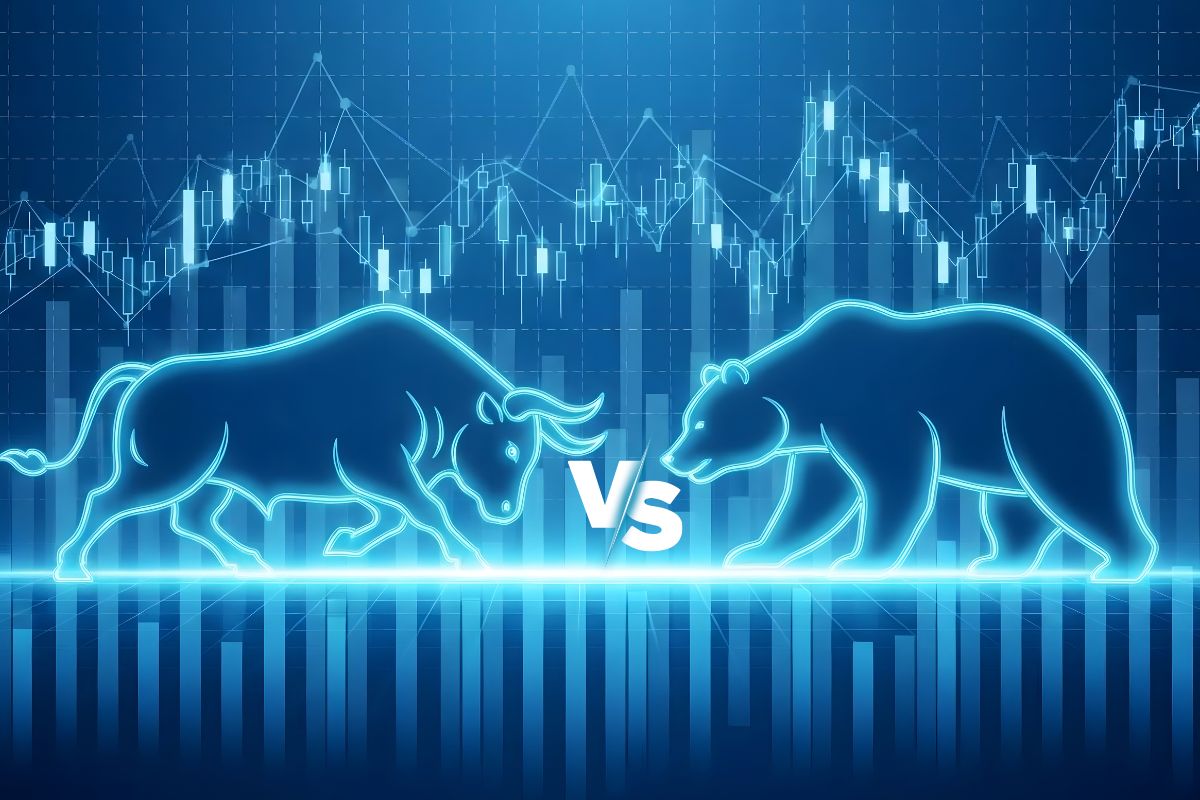The world of investing really does feel like a rollercoaster. One day you’re up, everything looks golden, and the next you’re staring at losses wondering what just happened. When folks on TV or in articles talk about “bulls” and “bears,” they’re not talking about animals at all. They’re describing the two big moods of the market. Knowing the difference—and how each can affect your money—is pretty much essential if you want to get anywhere with investing.
Let’s keep it simple.
The Bull Market: The Good Times
Think about a bull. When it charges, its horns swing upward. That’s the picture you need for a bull market—things are heading up.
A bull market is basically a stretch where stock prices climb steadily. It’s not just a random jump one week and gone the next. Usually, people use a rule of thumb: if a major index like the S&P 500 gains 20% or more from a recent low, that’s considered a bull market. And here’s the kicker—it usually lasts for months, sometimes even years.
What shows you’re in a bull market?
- Rising prices. Portfolios grow, balances look healthier, and optimism fills the air.
- A strong economy. Jobs are plentiful, companies are earning more, GDP’s climbing.
- Confidence. People believe in the future of their investments, so they keep buying.
- High demand. More buyers than sellers, which pushes prices even higher.
Investors love bull markets. They make almost everyone look smart, even rookies who just showed up. But there’s a danger too—it’s easy to think the good times will last forever. And they don’t.
The Bear Market: The Downturn
Now flip the picture. Picture a bear swiping downward with its paw. That’s exactly how a bear market feels—prices falling, nerves rattled, fear spreading.
By definition, when a big index like the S&P 500 drops 20% or more from its high, you’re in a bear market. But the definition alone doesn’t capture it. The real story is in the mood: people lose confidence, fear creeps in, and selling becomes the norm.
Signs of a bear market?
- Falling prices. Stocks sink, portfolios shrink, people start to panic.
- A weak economy. Companies earn less, jobs get cut, recession chatter grows louder.
- Low confidence. Investors dump stocks just to stop the bleeding, which drags things down further.
- More sellers than buyers. The flood of selling outweighs demand, so prices keep dropping.
Bear markets are rough. Nobody enjoys them. They test your patience, your nerves, and your faith in your long-term plan. Still, they’re part of the system—almost like the market’s way of hitting reset.
Also Read: Amazon Revamps Pay Structure to Favor ‘Consistently High-Performing’ Employees
The Difference in a Nutshell
| Feature | Bull Market | Bear Market |
|---|---|---|
| Price Trend | Sustained climb (20%+ gain) | Sustained drop (20%+ loss) |
| Investor Sentiment | Optimistic, confident | Pessimistic, fearful |
| Economic Conditions | Growth, profits, jobs | Slowdown, layoffs, possible recession |
| Supply & Demand | More buyers than sellers | More sellers than buyers |
| Metaphor | Bull lifting horns upward | Bear swiping downward |
A Look Back: Historical Market Cycles
These ups and downs aren’t new. They’ve been part of financial life for more than a hundred years. If you dig through S&P 500 history, you’ll see the same pattern repeating again and again.
Historical Bull and Bear Markets (Since 1928)
| Market Type | Average Length | Average Return/Loss |
|---|---|---|
| Bull Market | 4.9 years | +177.6% |
| Bear Market | 1.5 years | -35.1% |
Source: Stifel (based on S&P 500 data from 1932-2024)
What’s striking is how much longer bull markets last compared to bear markets. On average, bulls stick around three times longer. And the gains far outweigh the losses. So yes, bear markets sting while you’re in them, but they don’t usually last as long as they feel.
How to Invest in Each Market
Different markets call for different playbooks. What works in one often backfires in the other.
In a Bull Market (when things look rosy):
- Buy and hold. Stick with quality stocks or funds, let time do its thing.
- Growth stocks. Fast-growing companies—tech, biotech, consumer-focused businesses—tend to shine.
- Dollar-cost averaging. Keep investing a fixed amount regularly. No need to guess the “perfect time.”
In a Bear Market (when patience is key):
- Don’t panic sell. That’s the number-one mistake. Selling locks in your losses.
- Keep dollar-cost averaging. Ironically, it works even better here since falling prices let you buy more shares with the same money.
- Hunt for bargains. Solid companies often get discounted, and they’re likely to bounce back.
- Defensive sectors. Staples like food, healthcare, and utilities tend to hold steady.
Some say bear markets make millionaires. Maybe that’s dramatic, but it’s true they create chances—if you can keep your cool.
The Bottom Line: Perspective Is Everything
Markets swing. That’s just the reality. Trying to predict every twist is nearly impossible, and most people lose money trying. The smarter approach is to have a plan and stick with it.
If you’re investing for the long term—ten years or more—your focus should be your own goals, not the latest scary headline. History shows the market always recovers, always pushes to new highs. So don’t get shaken out. Stay steady, stay patient, and when the bull eventually shows up again, you’ll be ready.


